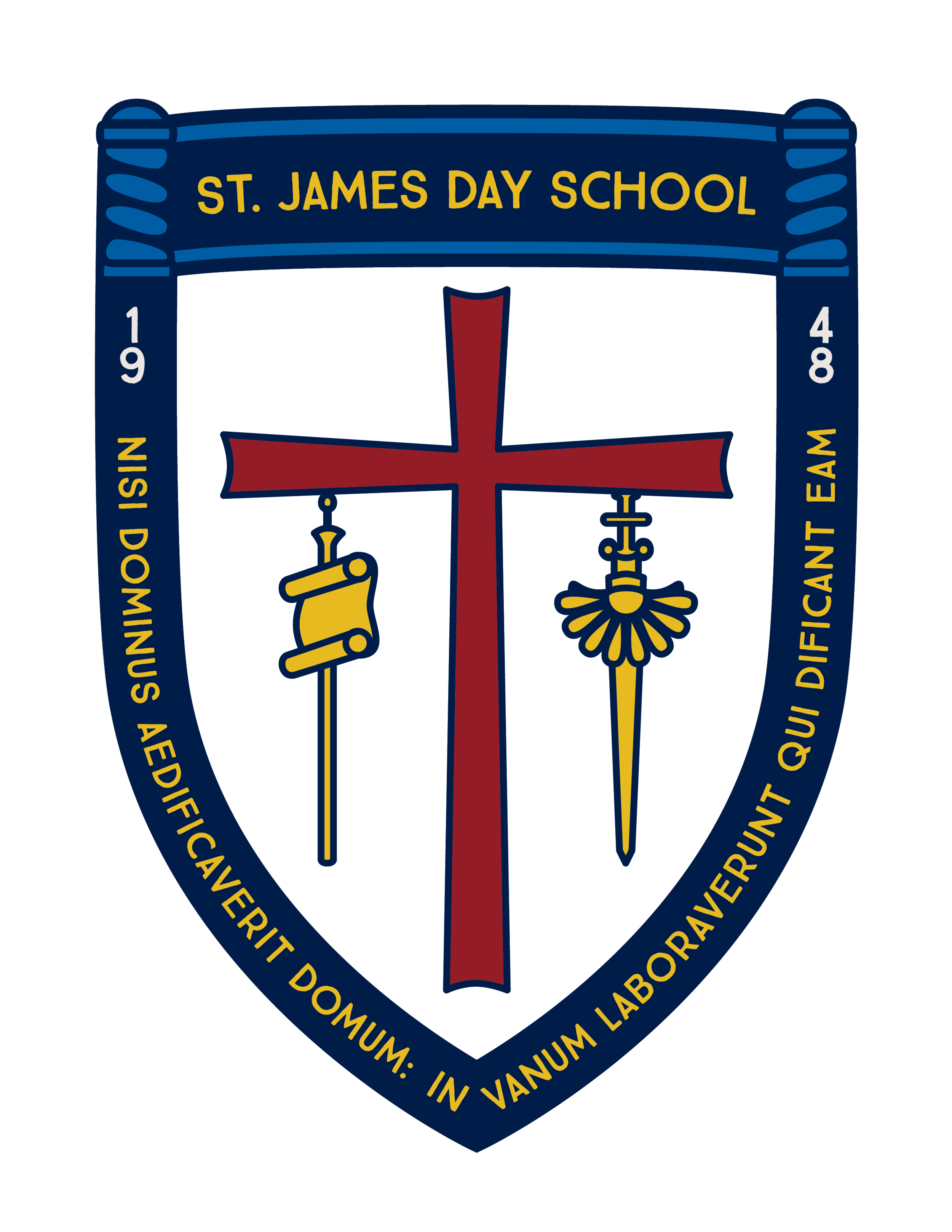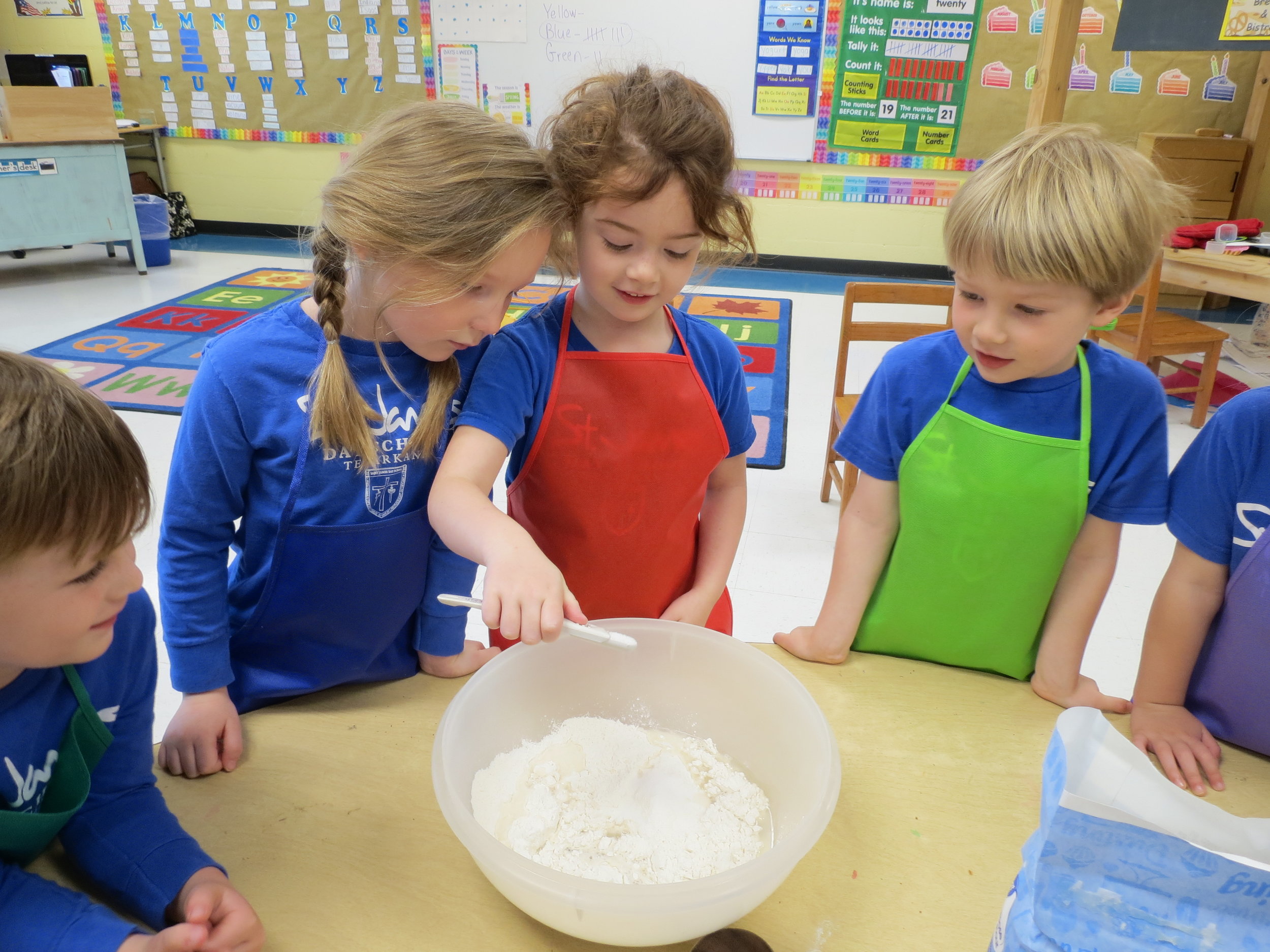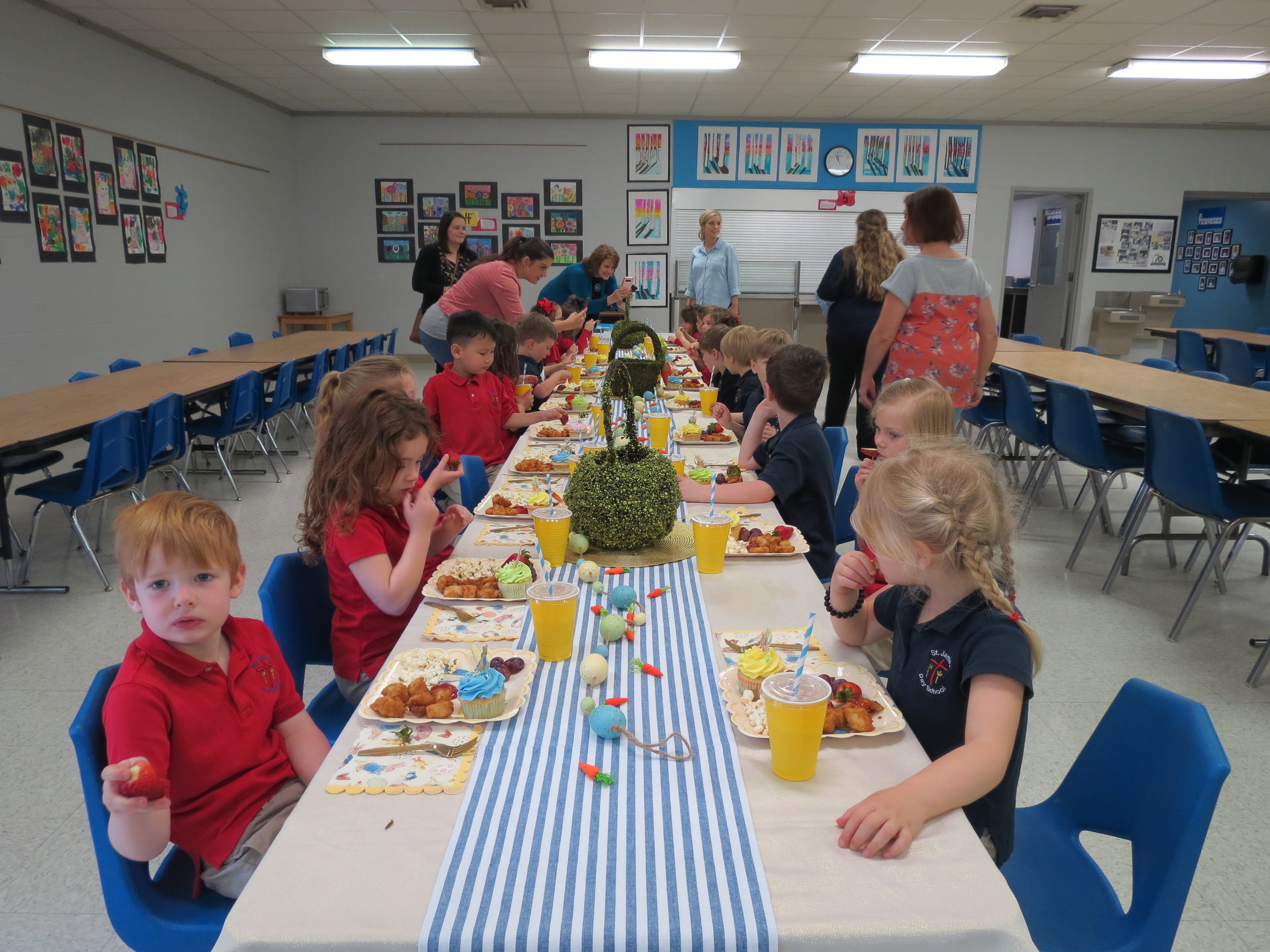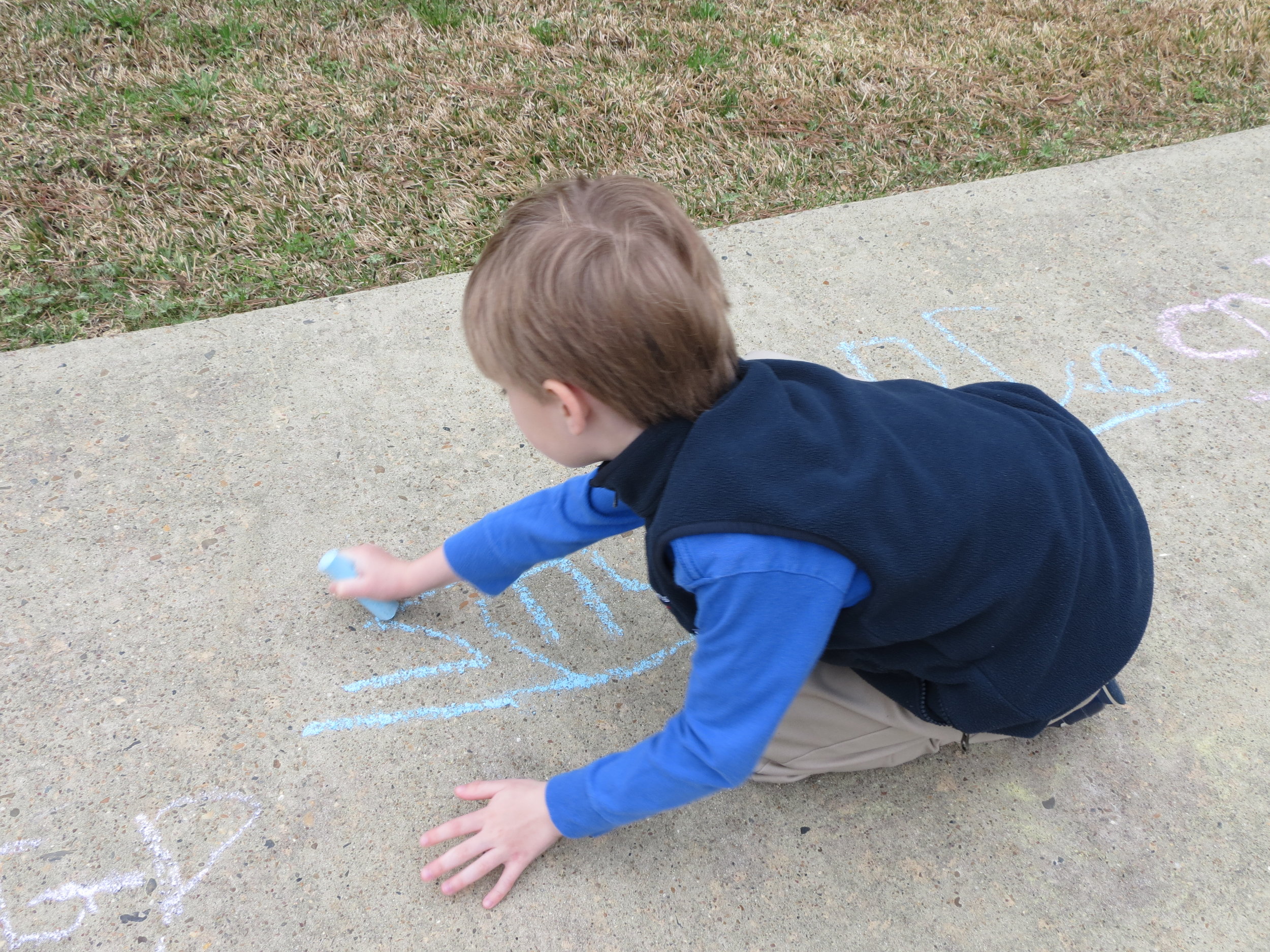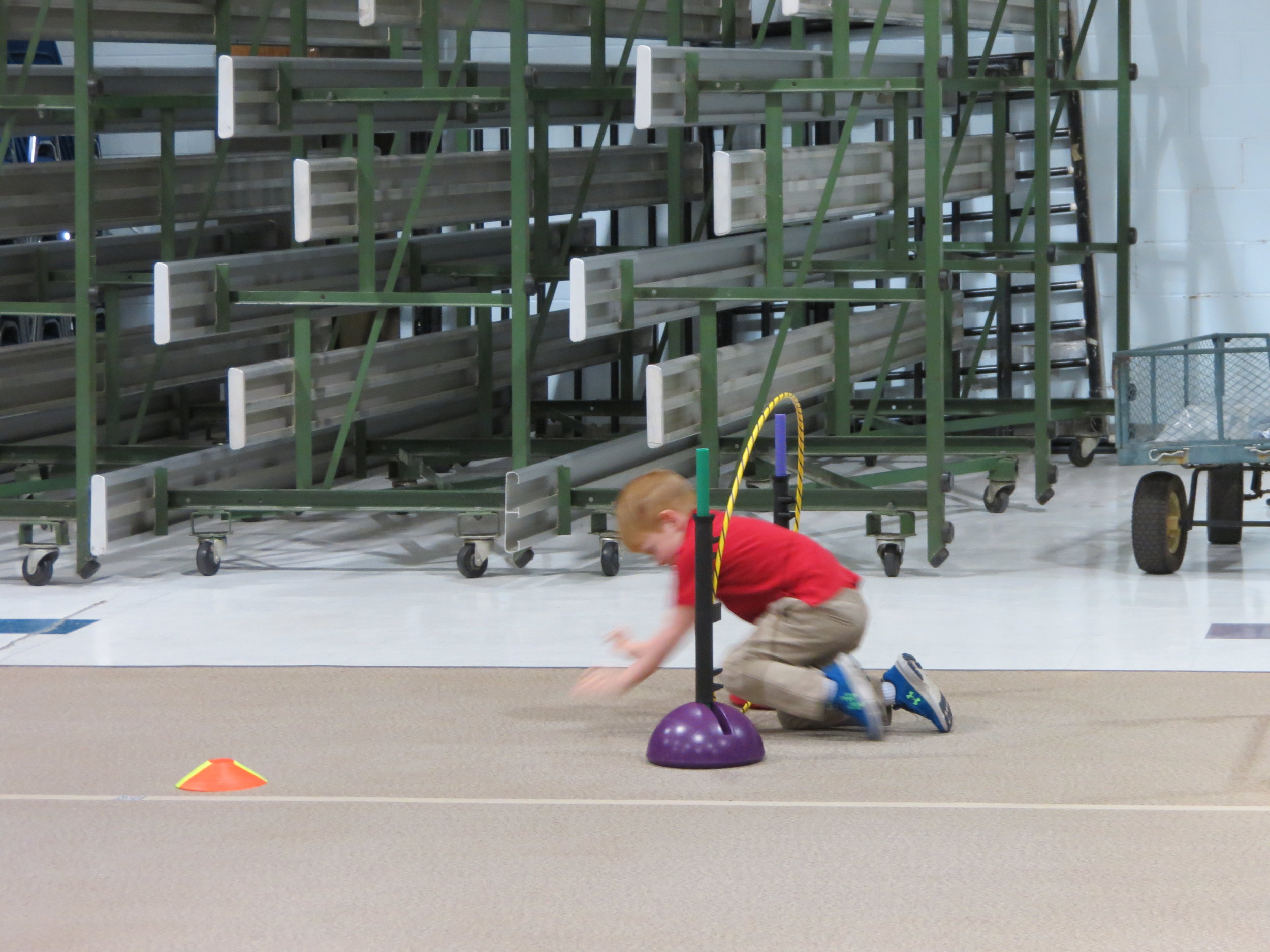Why are we investigating bread in PreK? Bread is everywhere! Nearly every culture in the world eats some type of bread. From a very young age, children may be offered a variety of types of breads at meals.
A study of bread provides children with an opportunity to learn how bread is made, the kinds of bread we eat, who works with bread, and how and when we eat bread.
A study of bread encourages children to explore a familiar topic and allows them to gather information, solve problems, imagine, and think symbolically. Children will explore different types of breads, investigate their characteristics, and learn how bread is made and served.
The children love having flour in our sensory bin! Our homeliving center has transformed into Best Bread & Bistro. I put out a loaf of bread and cookie cutters and you would have thought it was Christmas morning!!
We painted bread and toasted it for a snack. Each child was given a piece of bread. I poured milk into four cups and added red, blue, green, and yellow food coloring. The children had to take a paintbrush (unused) and paint designs on their bread. We toasted it in the toaster and they thought this was the coolest activity ever.
We made playdough! Activities like this are not only fun, but helps them understand comparison and measurement. They understand that there are different ways of measuring. They are beginning to recognize the attributes of capacity (how much something holds).
We gathered the ingredients and measuring tools. We read the recipe together and talked about which tools were needed to measure each ingredient. We took a class vote and tallied our answers to see what color the playdough would be and blue won. Each child was given a chance to measure, pour, scoop, or mix the ingredients.
The children sorted and graphed jelly beans! We enjoyed a visit from the Easter bunny, had a blast hunting eggs despite the weather and enjoyed a great lunch. I am so thankful to be working at a school where religion is such a daily part of what we do.
